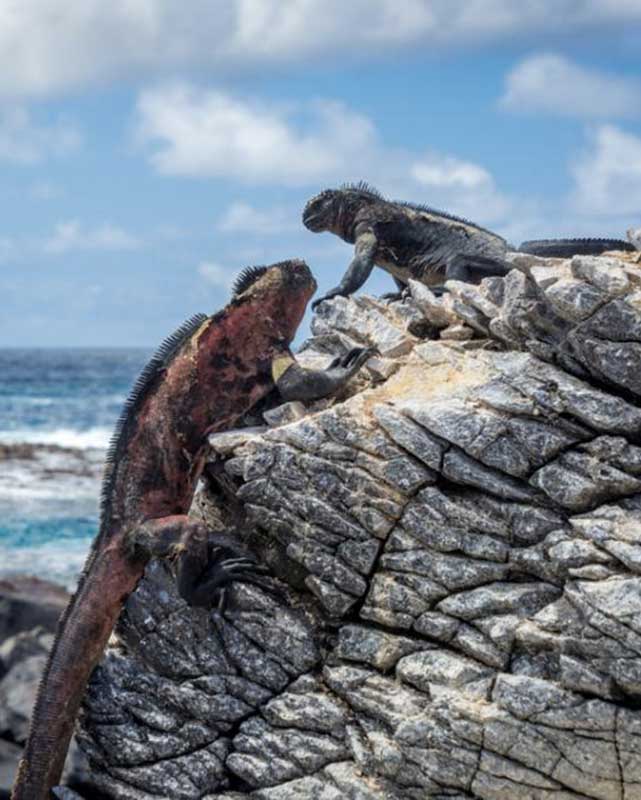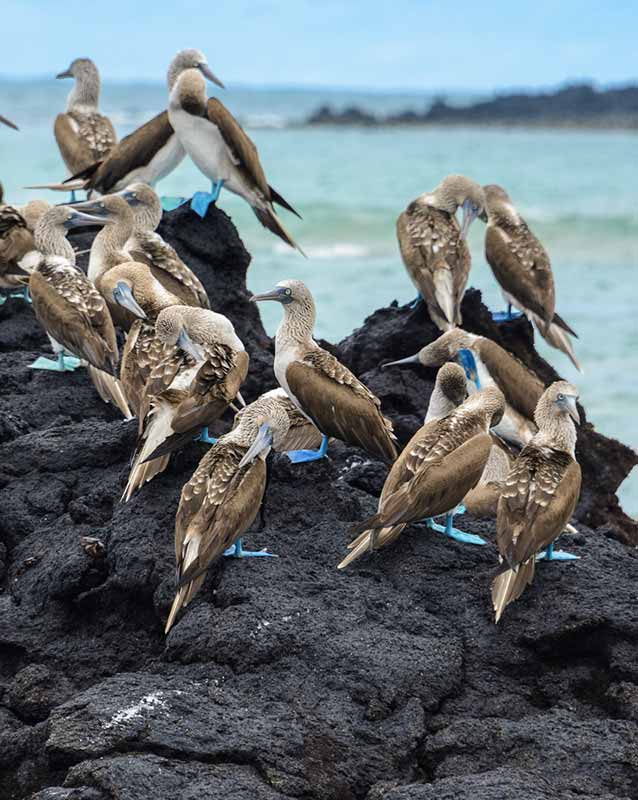ECUADOR IN 4 REGIONS
Quito & its surroundings – The Ecuadorean Amazonia -The Ecuadorean Andes – Guayaquil & Galapagos
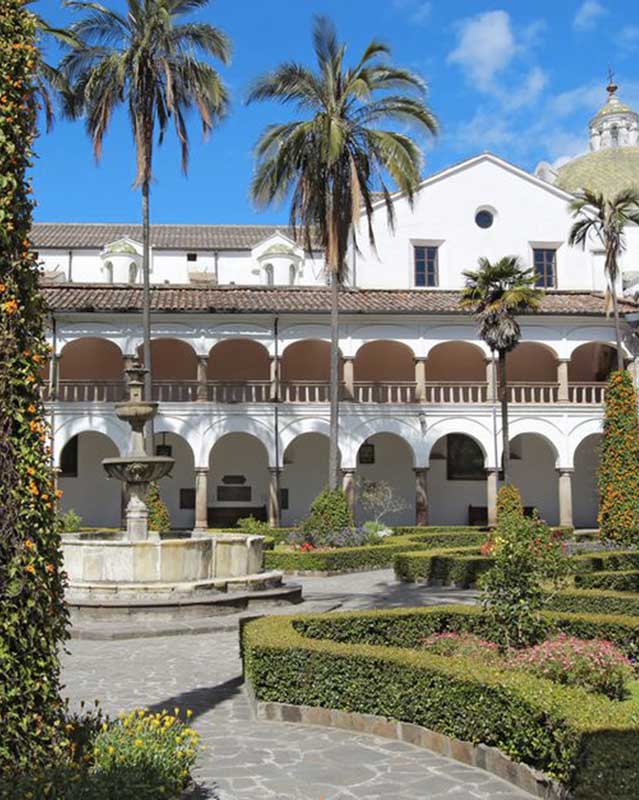
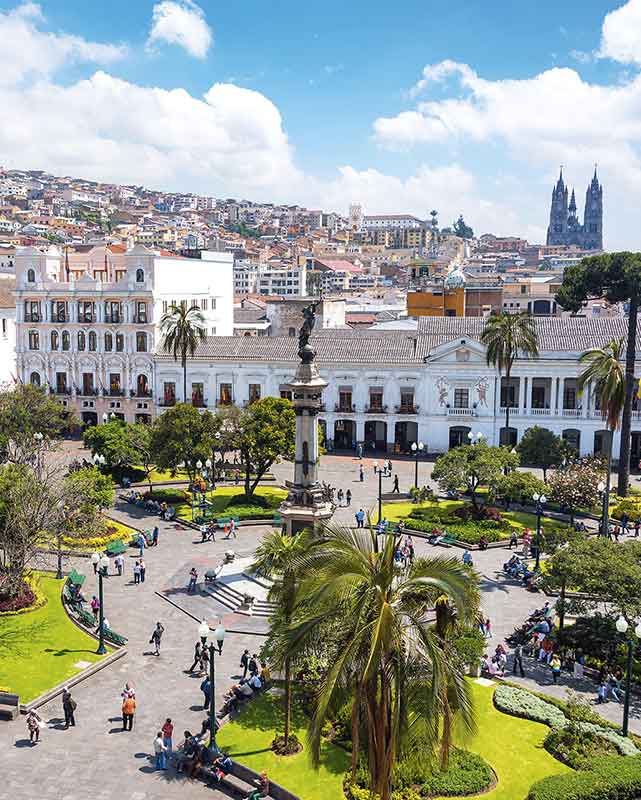
Quito
The capital of Ecuador and the country’s entry door, is a glowing colonial city designated World Heritage Site. Monasteries, churches, historical residences are taking us to the great flamboyant style of the “Baroque School of Quito”, a Spanish and indigenous religious art fusion.. The city displays splendid views of the surrounding mountain ranges.
Among the key sites of the city:
- Companionship church
- Cathedral
- Government Palace
- San Francisco, Santo Domingo and San Agustin Church and Monastery
- Square of the Independence
- La Ronda, traditional neighborhood
- Monument “la mitad del mundo”, devoted to the Equator line located near Quito
Otavalo
North of Quito, it is the first stop of the Equator’s indigenous world discovery where one of the most important native markets of Latin American is held every day. Departure point to explore a series of small villages that led amateur travelers to be charmed by popular traditions as well very pretty natural sites, such as the San Pablo Lake towered over by the Imbabura volcano which rises more than 4600 meters.
Cotopaxi National Park
Located south of Quito, walk or trekking in this park that surrounds Cotopaxi volcano, a giant close to 5900 meters, enable to admire the breathtaking beauty of the Andes landscapes.
Papallacta
Andes small village next to Quito and well-known for its natural pool with thermal waters.
Mindo
This small town is located west of Quito, at the end of a valley, convenient departure point for many journeys especially known for watching birds in the middle of incredible landscapes.
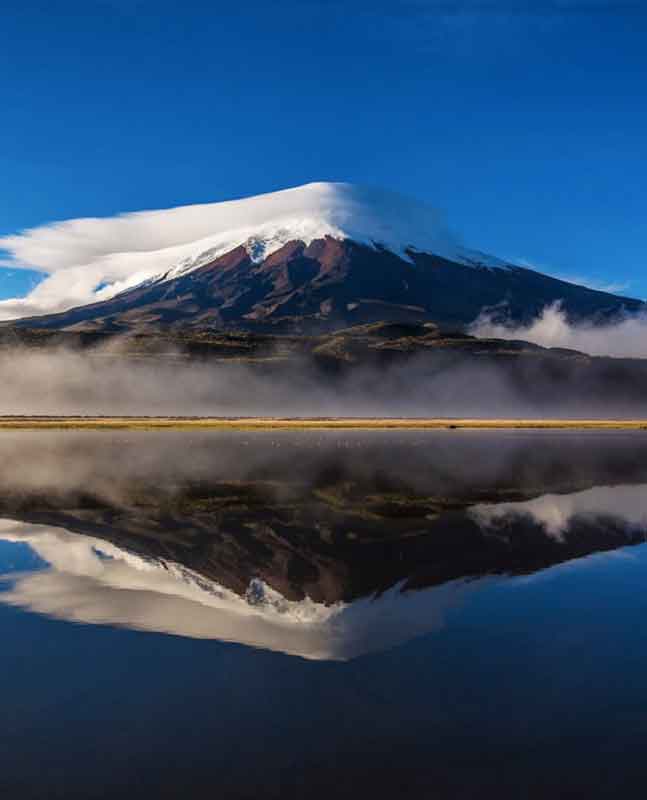
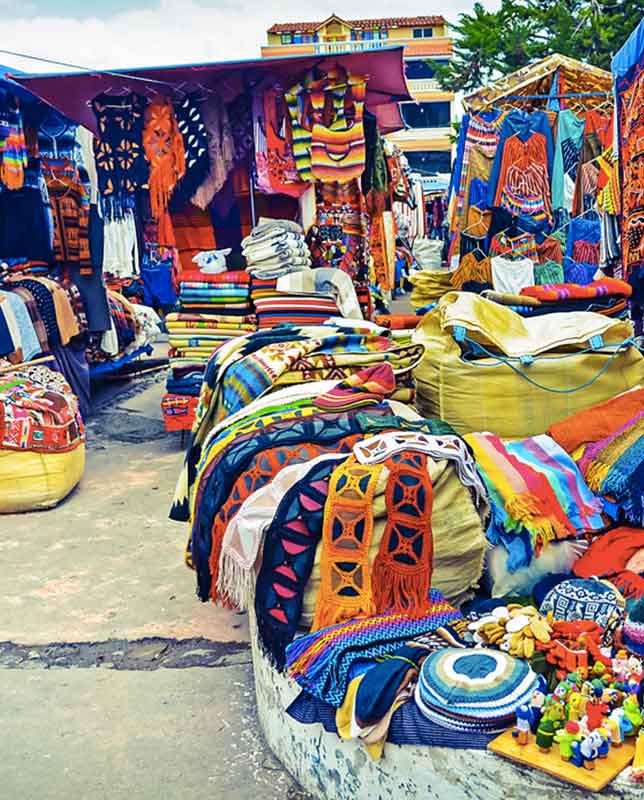
Misuahuali
Leaving Quito 7 hours are needed to reach the vast amazonian prairies crossed by the Napo River. Alongside road, watch for the greenery magic change going from the Andes towards the tropical forest.
Misuahualli
Misuahualli, small harbor on the Napo River, departure in a canoe with engine or in a little boat through the jungle to one of the lodges nestled in the thick greenery.
The Ecuadorian Amazonia has an invaluable worth for the traveler who loves Nature. It can be discovered on foot or by canoe. Many journeys are suggested to travelers: astonishing wildlife and flora discovery, meet with the indigenous communities…..It is easy to discover as the trails in the forest and the waterways are more accessible. Thus, without losing the quality of the discovery as the wildlife and fauna are rich and astonishing. You can also visit local native communities who have well preserved their ancient traditions.
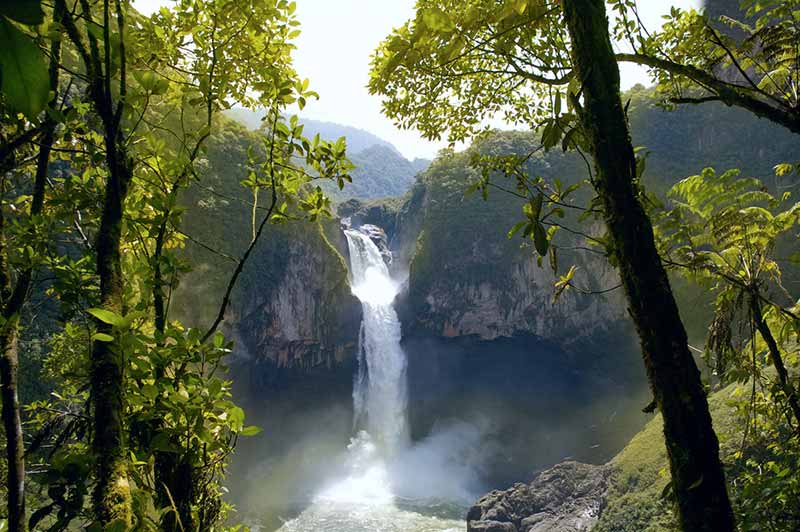
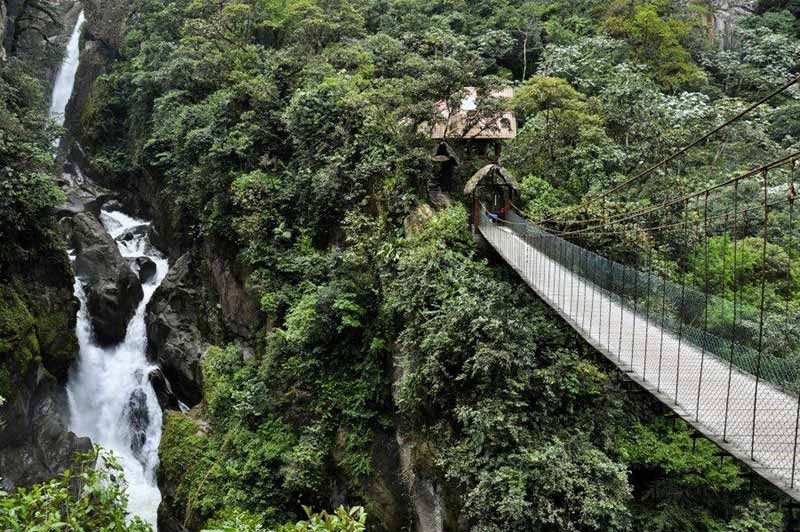
The best way to explore this part of Amazonia without a doubt by spending two or three nights in lodges that have at your disposal forest rangers guides experts in the region.
For example Casa del Suizo Lodge was ideally built on a headland. To enter the Amazonian world, several journeys can be organized on foot or by canoe leaving from the lodges.
Baños
The city is the communicating door between the Andes world and the Amazonia. It is a must see pass through.
Baños is located facing the Amazonia, in the middle of mountains covered by luxuriant greenery and splendid hidden waterfalls as well as thermal spring water in natural pools. It is a genuine sanctuary of nature.
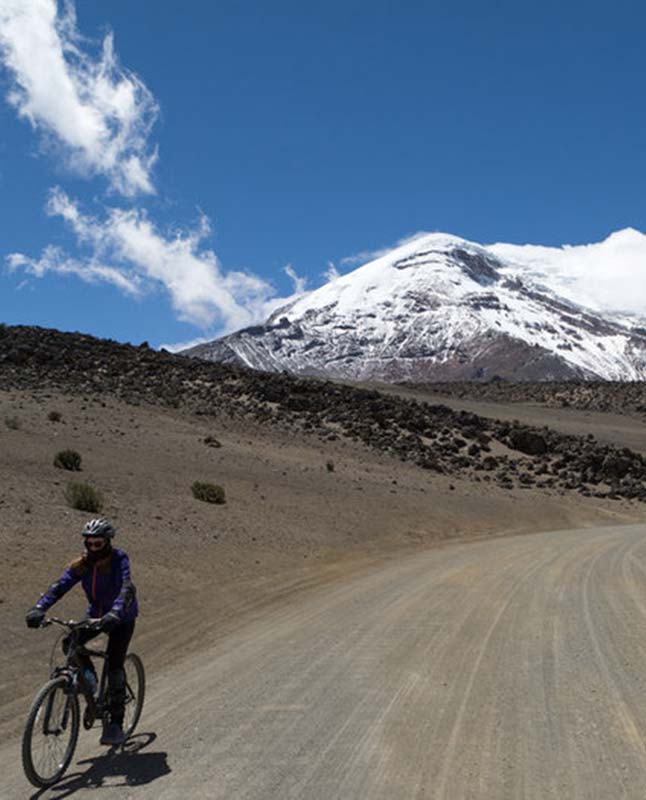
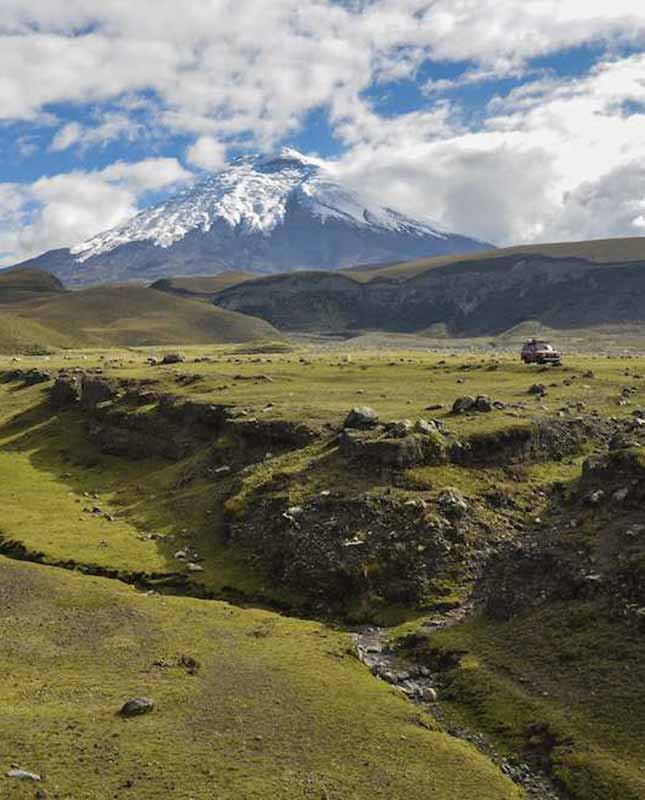
THE avenue OF VolcanOEs
From north to south, from Quito to Cuenca, a wide plateau stretches, between 2000 and 3000 meters of altitude, surrounded by many extinct or active volcanoes, which are to be targeted, such as the Imbabura, 4560 meters, and the Illiniza 5126 meters. There, ancestral haciendas, transformed in deluxe hotels, welcome visitors. These residences, built by conquistadors or their descendants, hold part of Ecuador’s history. Paintings, furniture, decoration, all this, take us back to the great life style that all the big families coming from Spain had in the 16th century and onwards. Humboldt had called all these vast valleys surrounded by mountains, “the avenue of volcanoes”.
Rio Bamba
The city of Rio Bamba nestled in the Andes’ peak, preserves a beautiful set of architecture with the Republican style (end of 19th century). From Rio Bamba, you can take “the train of the Andes” and climb through the Andes Mountains at more than 3000 meters of altitude all the way to “the Devil’s nose” then go down towards Cuenca. Unforgettable mountains landscapes
Ingapirca
Before arriving to Cuenca, a surprise gets the traveler at Ingapirca where the unique Inca vestige stands in the middle of the Andes landscape. Archaeologists cannot still certify if the Ingapirca ruins have belong to a temple or a fortress.
Cuenca
At 2000 meters of altitude, the city charms because of its architectural heritage where the 19th century Italian style and colonial style are harmoniously blending. The ultimate cultural city, classified World Heritage Site. Cuenca has an important archaeological museum, the museum of indigenous cultures. Also to be visited the market of flowers held in the small Carmen square not too far from the church El Carmen de la Asuncion.
To be enjoyed too, small workshops where fine straw hats are made, also called “panama” for which only the Cuenca region has the secret of making hats…. strolling down the streets and squares of Cuenca is highly recommended as the city is plentiful of an irresistible appeal.
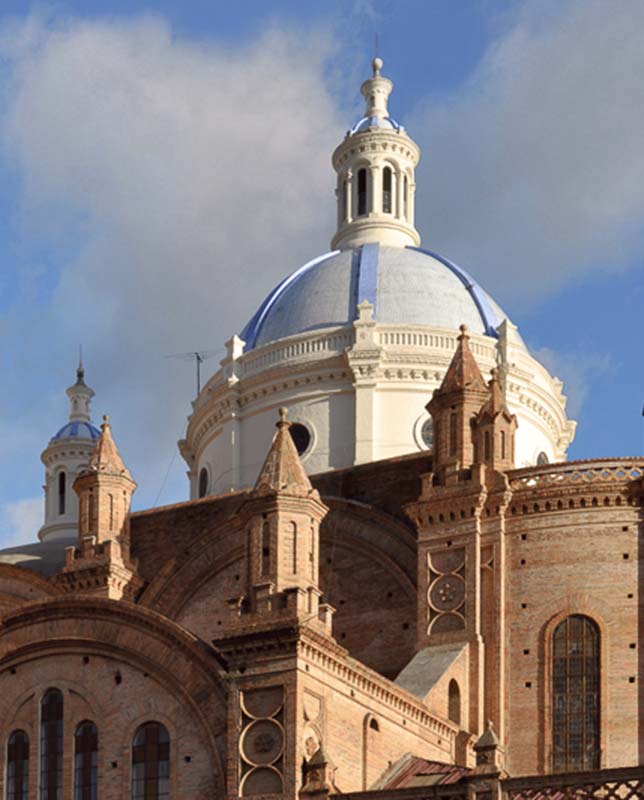
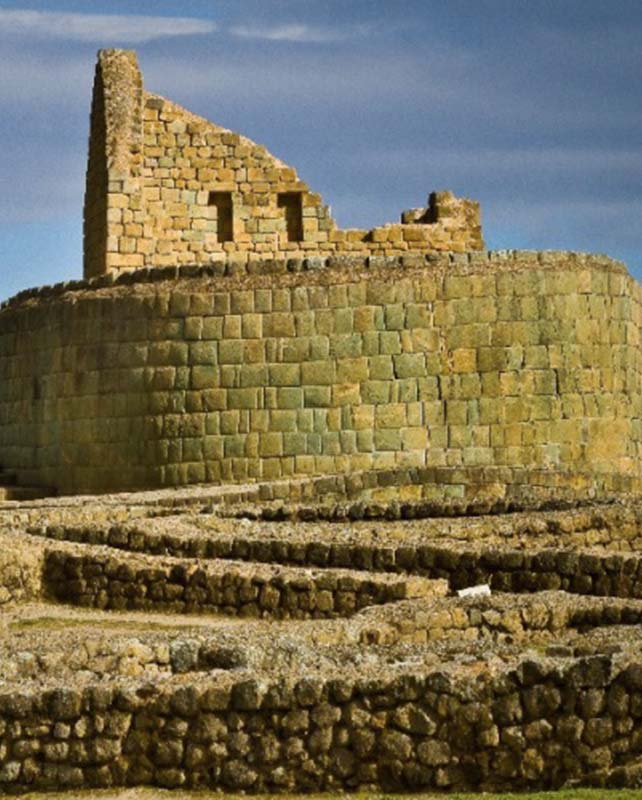
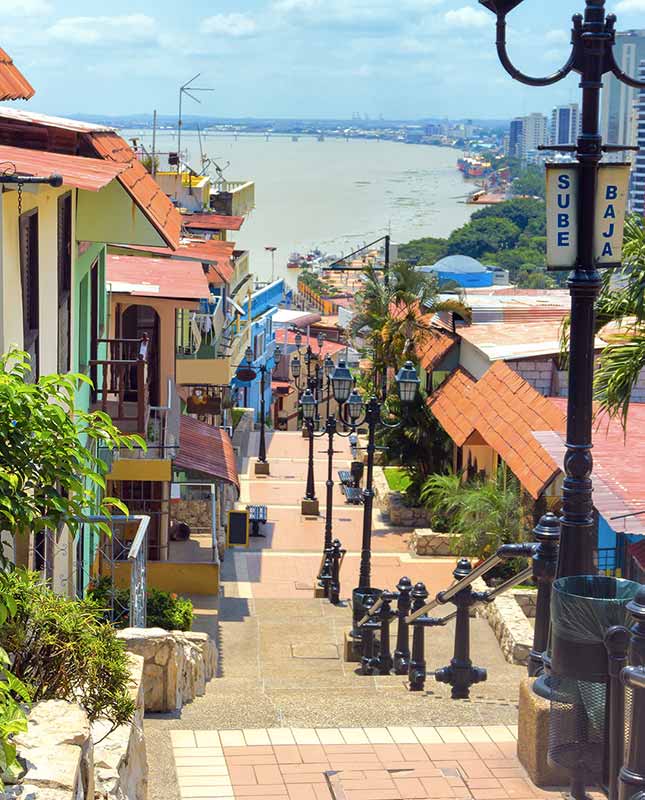
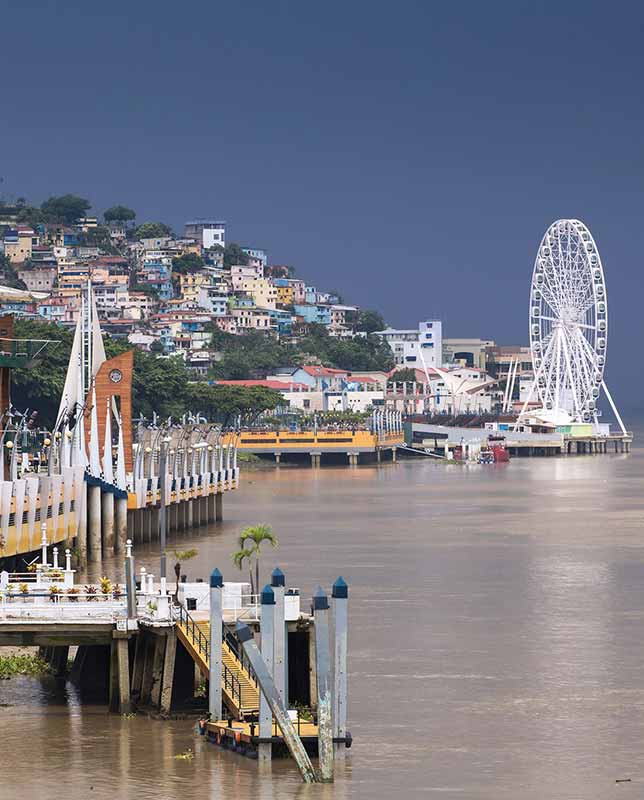
Guayaquil
Main harbor of the country, Guayaquil keeps its African influences untouched and reveals a colorful and tropical Ecuador. Among the sites to see, take a walk on the Malecon 2000, a stroll particularly successfully made by the side of the river with public gardens, along with the typical old and vibrant neighborhood of Las Peñas.
Guayaquil can be reached by plane from Quito or from France by Iberia via Madrid.
Guayaquil is the ideal departure point to go visit the must-see Galapagos! These Islands off the coast of Ecuador never stop fascinating the humanity. Hovered in the middle of the Pacific, about twenty main islands welcome a rich and unusual wildlife.
Animals from the land and the sea coming from the four corners of the earth to which can be added the endemic species, all have found in the archipelago the ideal environment!
The nature has shaped impressive landscapes: volcanoes and lagoons; beaches and rocks; deserts and tropical vegetation……
Galapagos
This paradise declared national park and designated World Heritage is indisputably one of the richest destinations to discover in Latin America, and also one of the most protected areas, thanks to a responsible tourism policy which protects these so delicate ecosystems.
From island to island, not-to-be-missed:
- Santa Cruz – “Darwin Station” visit, scientific research center for the species protection mainly the famous gigantic turtles.
- Isabela – The spectacular volcanic landscapes peppered by lagoons. Many birds including the blue foot gannets, turtles, iguanas and flamingos. Hiking is possible
- Fernandina – to watch colonies of marine iguanas, fur sea lions as well as red and turquoise crabs.
- Genovesa – Bird Island: hidden gannets, mockingbirds, red foot gannets,….
- From Guayaquil or from Quito, the traveler can take a flight to go to the Galapagos archipelago, Charles Darwin’s dearest islands.
Today is feasible to undertake a journey to Galapagos by staying in lodges and by going on cruises. A must do journey!
